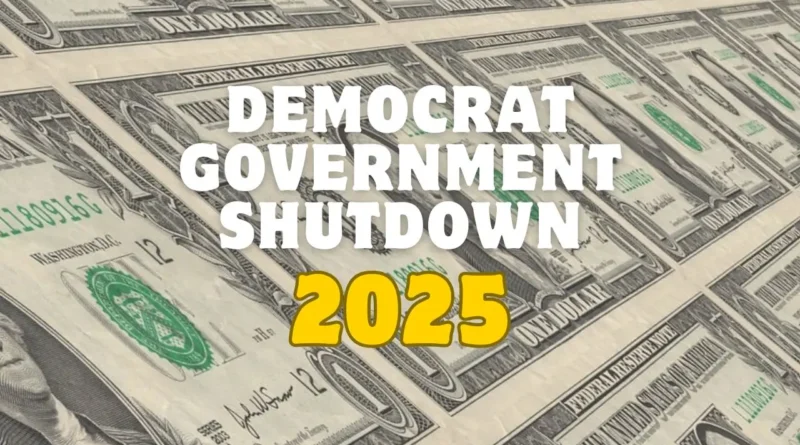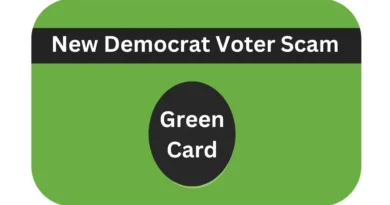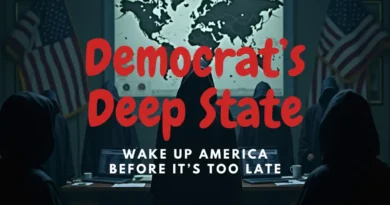Why Government Shutdowns Cost Taxpayers Billions
Why The Democrat Government Shutdown Doesn’t Save Money — It Costs Billions
Why Government Shutdowns Cost Taxpayers Billions. Whenever the threat of a government shutdown looms, a familiar debate resurfaces: Some argue that shutting down parts of the federal government is a way to cut waste and save taxpayer money. After all, if agencies are closed and workers are furloughed, that must mean the government is spending less, right?
Unfortunately, that logic doesn’t hold up under scrutiny.
The reality is clear and well-documented: Government shutdowns cost the country money — and a lot of it. Far from being a cost-saving measure, shutdowns are economically damaging, fiscally inefficient, and logistically disruptive. Over time, they have cost tens of billions of dollars, drained productivity, and shaken public and global confidence in America’s ability to govern itself.
Let’s break down exactly how and why.
1. Back Pay for Furloughed Workers
One of the most direct and easily measurable costs of a shutdown is the back pay that federal employees receive once the government reopens.
When a shutdown occurs, hundreds of thousands of federal employees are furloughed — placed on temporary unpaid leave. However, since the 2013 shutdown, Congress has consistently approved legislation to pay these workers retroactively, even though they weren’t allowed to work during the shutdown.
This means taxpayers are essentially footing the bill for no work being done during that time.
For example, during the 2018–2019 shutdown (the longest in U.S. history at 35 days), about 800,000 federal workers were affected. The government paid billions in back pay once it reopened. This isn’t theoretical — it’s a known, repeated expense that comes with every major shutdown.
2. Lost Productivity and Delayed Work
Federal employees are the backbone of a functioning government, handling everything from air traffic control and food inspections to processing tax returns, social security benefits, and small business loans.
When those workers are sent home, critical work doesn’t get done. And even when they return, the lost time isn’t easily recovered. Work piles up, delays grow longer, and agencies often require overtime pay or extended hours to catch up — adding even more cost to the shutdown’s aftermath.
In short: a shutdown creates a backlog of work that becomes more expensive to process once the government resumes.
3. Disruptions to Government Contracts and Programs
A less visible — but extremely costly — consequence of a shutdown is the disruption it causes to federal contracts and ongoing projects.
Many government functions rely on contractors for services like construction, IT support, research, and consulting. During a shutdown, these contracts may be paused, delayed, or even canceled. This can lead to termination penalties, remobilization fees, and increased costs to restart paused operations.
Additionally, agencies like the National Institutes of Health (NIH), NASA, and the Department of Energy halt funding for research programs, clinical trials, and scientific studies. These pauses not only delay progress, but in some cases waste the money already spent on incomplete projects.
4. Damage to the U.S. Economy
Government shutdowns don’t just affect federal employees and contractors — their economic impact ripples outward, affecting the broader economy.
When federal workers miss paychecks, they spend less, which hurts local businesses — especially in areas with high concentrations of government employees (like Washington, D.C., and military towns). Restaurants, gas stations, childcare providers, and service-based businesses all suffer revenue losses that are never reimbursed.
During the 2018–2019 shutdown, the Congressional Budget Office (CBO) estimated the economy lost $11 billion, with $3 billion of that permanently lost due to delayed consumer spending, reduced output, and missed government purchases. That’s real GDP that’s gone for good.
Markets also get nervous during extended shutdowns, especially if they coincide with debates over the debt ceiling. This can lead to drops in investor confidence, stock volatility, and credit rating threats for the U.S. government.
5. Hidden Administrative Costs
Planning for a shutdown isn’t free, and neither is recovering from one.
Before a shutdown, agencies must divert time and resources to prepare — identifying essential staff, creating contingency plans, securing data, and informing the public. After a shutdown, time is spent rehiring temporary staff, recalibrating systems, and catching up on delayed processes.
These operational disruptions result in lost time, wasted effort, and bureaucratic inefficiencies that further drain taxpayer dollars.
6. Long-Term Consequences
Beyond immediate financial costs, government shutdowns have long-term consequences that are harder to quantify but arguably more damaging.
Each shutdown erodes public trust in government, demoralizes the federal workforce, and undermines America’s image abroad as a stable, functional democracy. For federal agencies trying to recruit top talent, repeated shutdowns send a message that public service is unstable — making it harder to attract and retain skilled professionals.
When international partners and investors see a country unable to keep its government open or pay its bills, they begin to question its long-term reliability — which can affect borrowing costs and geopolitical influence.
Conclusion: The False Illusion of Savings
Government shutdowns might give the illusion of saving money by temporarily halting some operations, but in reality, they are a deeply inefficient, wasteful, and costly event. From back pay and lost productivity to economic damage and broken contracts, every day the government is shut down adds up — not just in dollars, but in lost time, lost trust, and lost opportunity.
Why Government Shutdowns Cost Taxpayers Billions
The bottom line? We don’t save money by shutting down the government — we spend more, and we get less.




